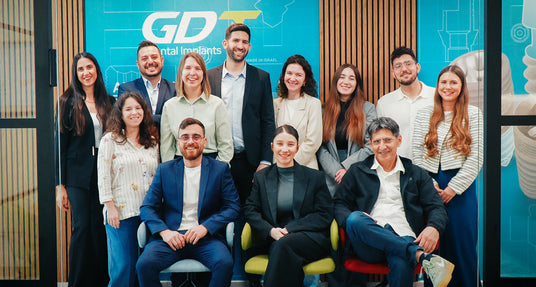Digital dentistry has reshaped the way clinicians approach restorative and prosthetic care. At the heart of this transformation lies CAD/CAM technology—computer-aided design and computer-aided manufacturing—that enables dentists and labs to deliver restorations faster, more accurately, and with greater consistency.
But the software and milling machines are only as good as the tools that do the cutting. CAD/CAM milling burs play a crucial role in achieving the level of precision patients expect from digital workflows. The right bur not only ensures a smooth restoration surface but also influences the longevity of both the restoration and the milling unit itself.
This article explores why milling burs matter, how they impact digital outcomes, and what clinicians and technicians should look for when choosing them.
The Role of CAD/CAM Milling Burs in Dentistry
Every crown, bridge, or implant-supported prosthesis starts as a digital design. To bring that design into reality, milling burs shape ceramics, zirconia, PMMA, or hybrid composites into the final restoration.
Key functions of CAD/CAM burs include:
- Cutting and shaping materials with micron-level accuracy.
- Preserving surface integrity to minimize the need for post-processing.
- Reducing internal stress in ceramics during milling.
-
Supporting efficiency by extending the lifespan of milling units.
Why Bur Quality Matters

Not all milling burs are created equal. The choice of bur directly affects:
-
Precision of Fit
A well-made bur delivers smoother, more accurate margins, reducing the likelihood of adjustments chairside.
-
Surface Quality
High-performance burs minimize chipping and microfractures, particularly in zirconia and glass ceramics.
-
Durability and Cost Efficiency
Longer-lasting burs reduce replacement frequency, lowering operating costs for dental labs and clinics.
-
Time Savings
Faster, sharper burs mean restorations are milled more quickly without sacrificing quality.
Materials and Bur Selection
The material being milled largely determines which bur should be used.
-
Zirconia and Lithium Disilicate: Require diamond-coated burs that resist wear while cutting extremely hard surfaces.
-
PMMA and Wax: Often milled with carbide burs designed for smoother, faster material removal.
-
Hybrid Materials: Need versatile burs with coatings that maintain sharpness across mixed substrates.
Clinicians and lab technicians should match bur selection not only to the material but also to the restoration’s complexity.
Innovations Driving Milling Precision
Recent advances have pushed CAD/CAM burs far beyond traditional rotary instruments.
- Diamond exposure technologies ensure consistent sharpness across the bur surface.
- Advanced coatings—such as Triton reinforcement—help extend durability, even under high-speed milling.
-
Precision shank grinding supports stable performance within automated milling machines.
These features help reduce vibration, increase smoothness, and ensure restorations maintain exact design specifications.
Practical Considerations for Dentists and Labs
When integrating milling burs into a digital workflow, consider:
-
Bur lifespan: Know the average number of units a bur can produce before replacement.
-
Sterility: Opt for burs produced and packaged in sterile conditions to protect patients and maintain ISO standards.
-
Compatibility: Confirm burs are compatible with your CAD/CAM system to prevent misfit or premature wear.
-
Supplier reliability: Work with trusted providers who guarantee consistency and quality across their product lines.
For example, GlobalBurs CAD/CAM milling burs are engineered with reinforced diamond bonding and undergo cleanroom packaging, giving dental professionals confidence in both precision and sterility.
CAD/CAM Milling and the Future of Restorative Dentistry
Automation is not about replacing the dentist or the technician—it’s about empowering them with tools that enhance accuracy, consistency, and efficiency. Milling burs may be small components, but they are central to the digital dentistry revolution.
Choosing high-quality burs ensures restorations meet patient expectations, minimizes chairside adjustments, and supports a sustainable, efficient workflow.
FAQs
How long do CAD/CAM milling burs last?
It depends on the material. Zirconia and ceramics wear burs faster than PMMA or wax. Premium burs can often mill 10–20 zirconia units before needing replacement.
Can I use the same bur for different materials?
Not recommended. Using one bur across hard and soft materials can dull cutting edges and shorten lifespan. Always match bur type to the material.
How do I know when to replace a milling bur?
Signs include reduced cutting speed, excessive heat, or poor surface finish on restorations. Regular monitoring helps avoid milling errors.
Are sterile packaged milling burs necessary?
While not always mandatory, sterile packaging ensures compliance with infection control standards and patient safety.
Final Takeaway
CAD/CAM milling burs are the unsung heroes of digital dentistry. Their quality directly impacts restoration accuracy, surface finish, and efficiency. For practices and labs embracing automation, investing in advanced burs—engineered for durability and precision—can make the difference between routine adjustments and flawless outcomes.
Explore more about GlobalBurs’ full range of rotary instruments to see how innovation in bur design can elevate your digital workflow.
References
- Miyazaki, T., Hotta, Y., Kunii, J., Kuriyama, S., & Tamaki, Y. (2009). A review of dental CAD/CAM: current status and future perspectives from 20 years of experience. Dental Materials Journal, 28(1), 44–56. https://pubmed.ncbi.nlm.nih.gov/19280967/
-
Reich, S., Wichmann, M., Nkenke, E., & Proeschel, P. (2005). Clinical fit of all-ceramic three-unit fixed partial dentures, generated with three different CAD/CAM systems. Journal of Oral Rehabilitation, 32(9), 670–677.
https://pubmed.ncbi.nlm.nih.gov/15819826/ - Zhang, Y., & Kelly, J. R. (2017). Dental ceramics for restoration and metal veneering. Dental Clinics of North America, 61(4), 797–819.
https://pubmed.ncbi.nlm.nih.gov/28886769/


